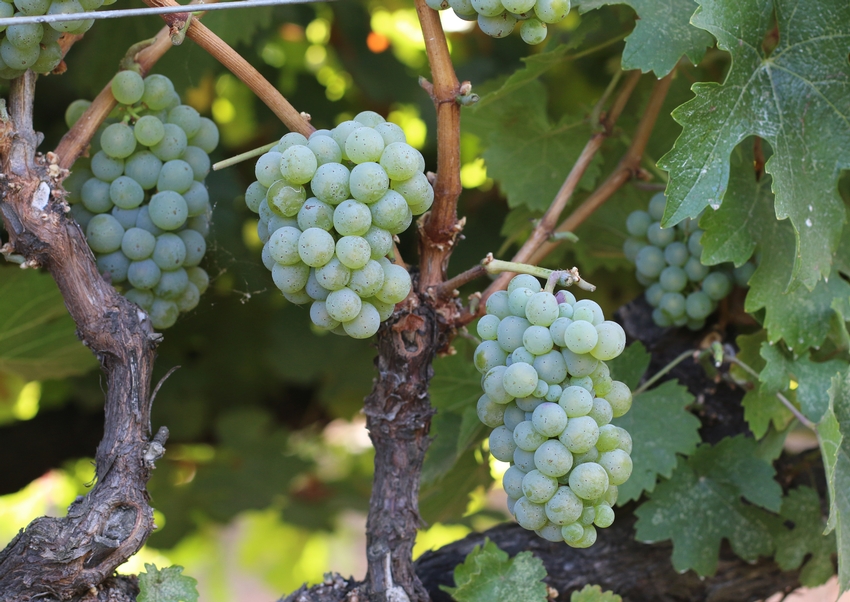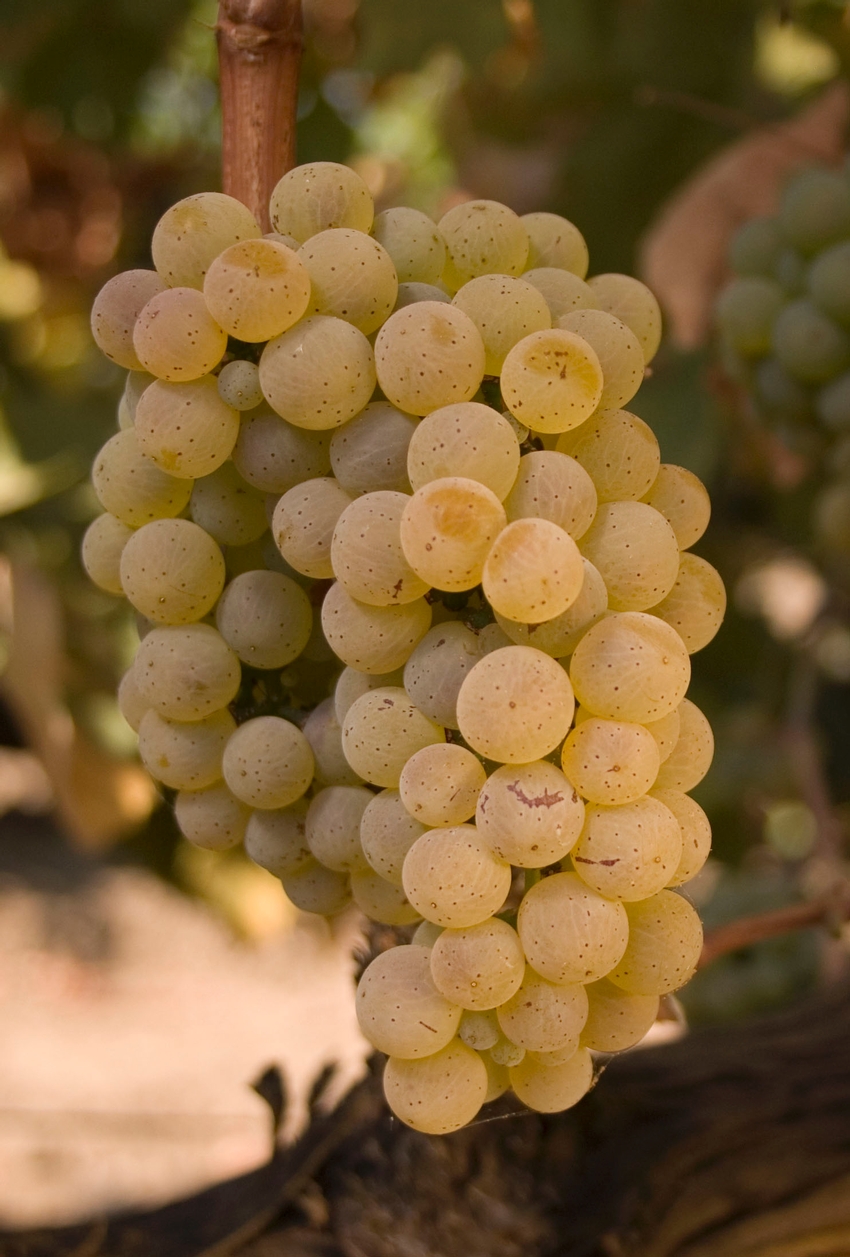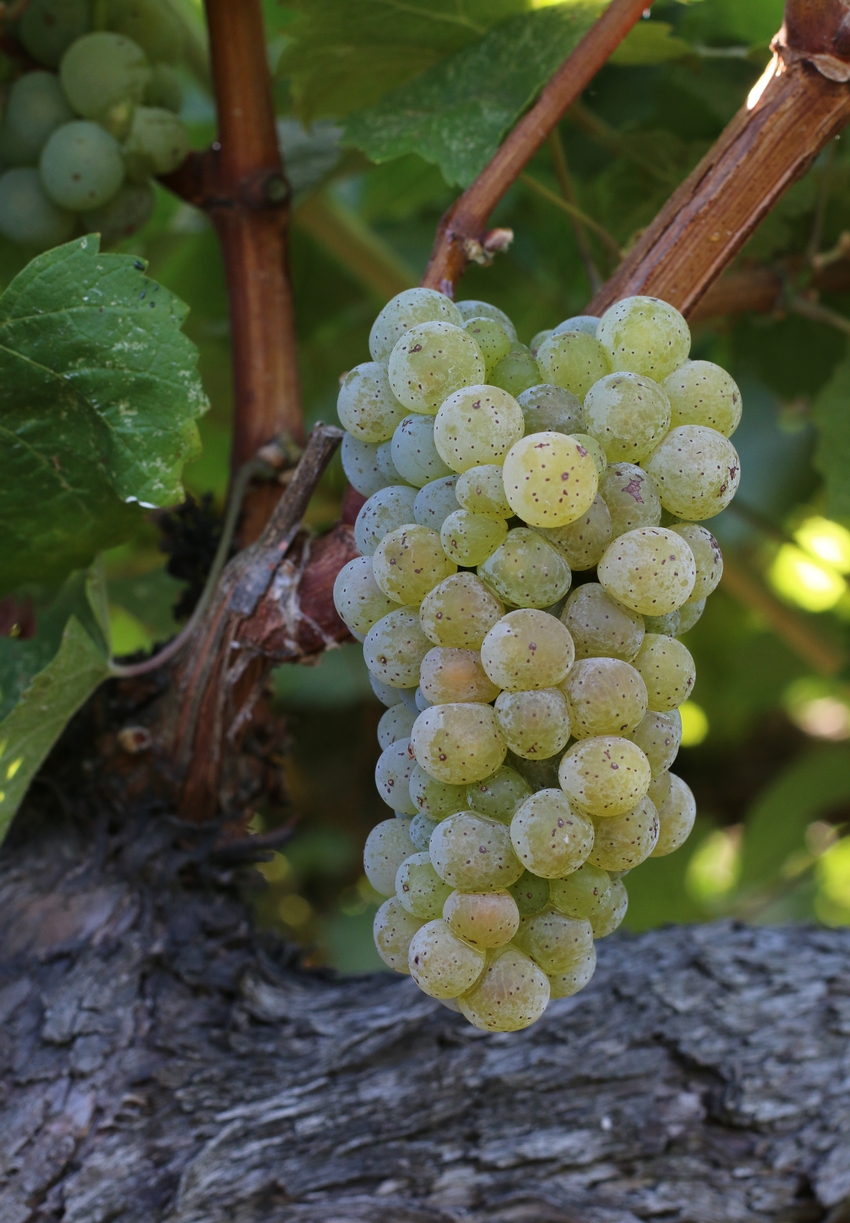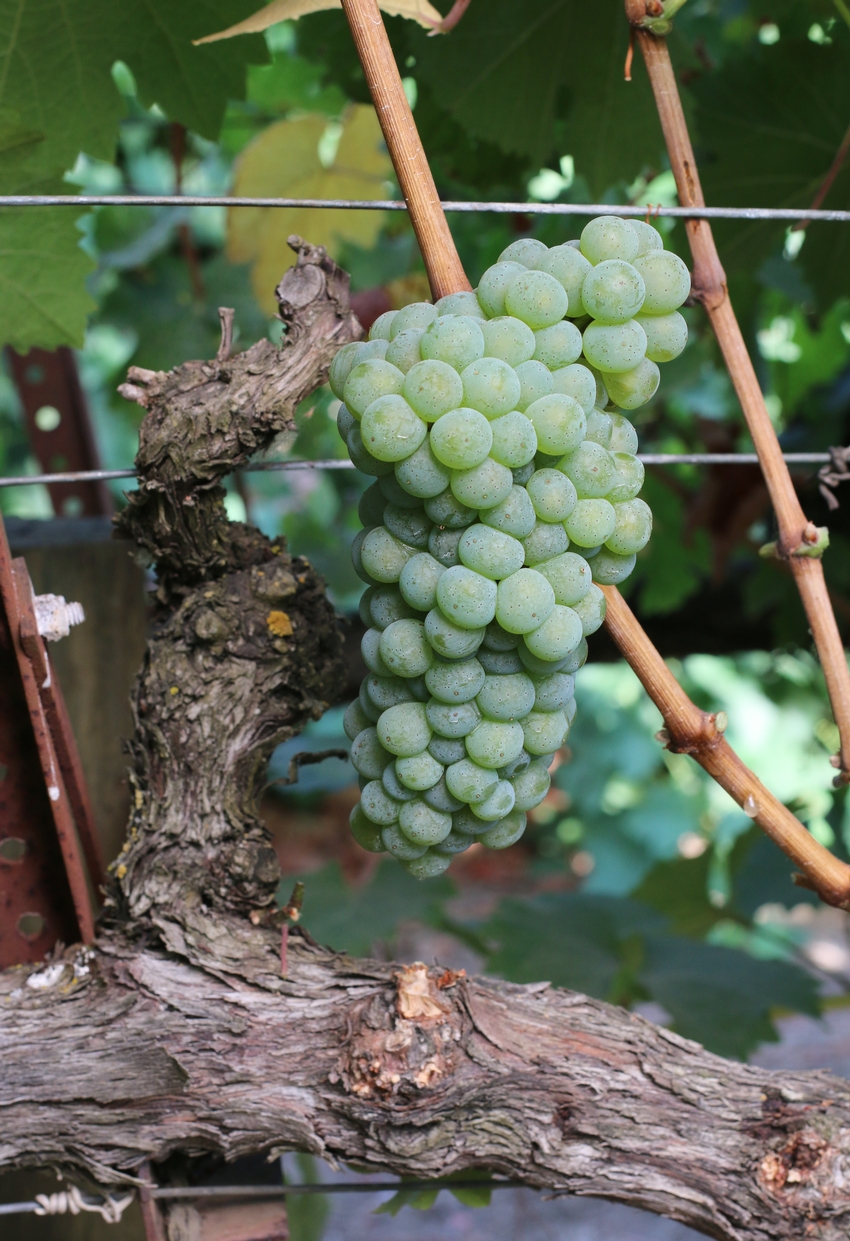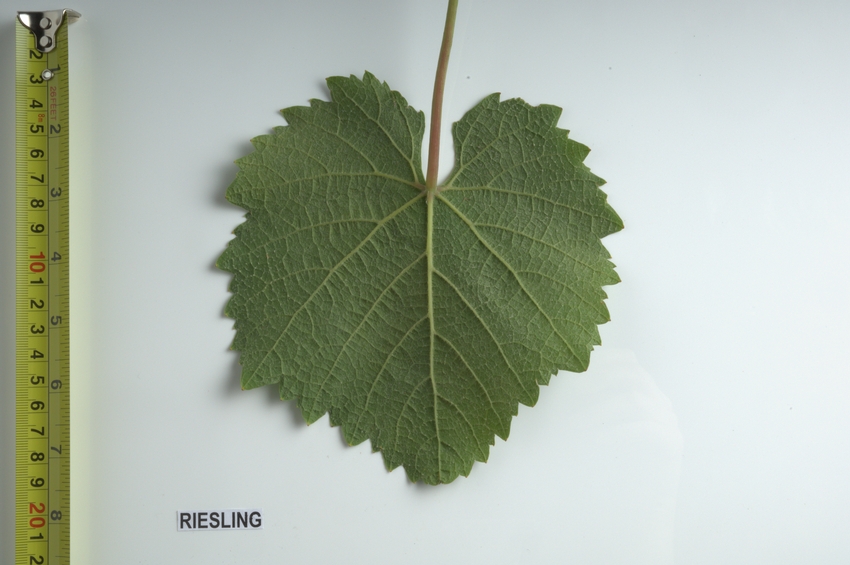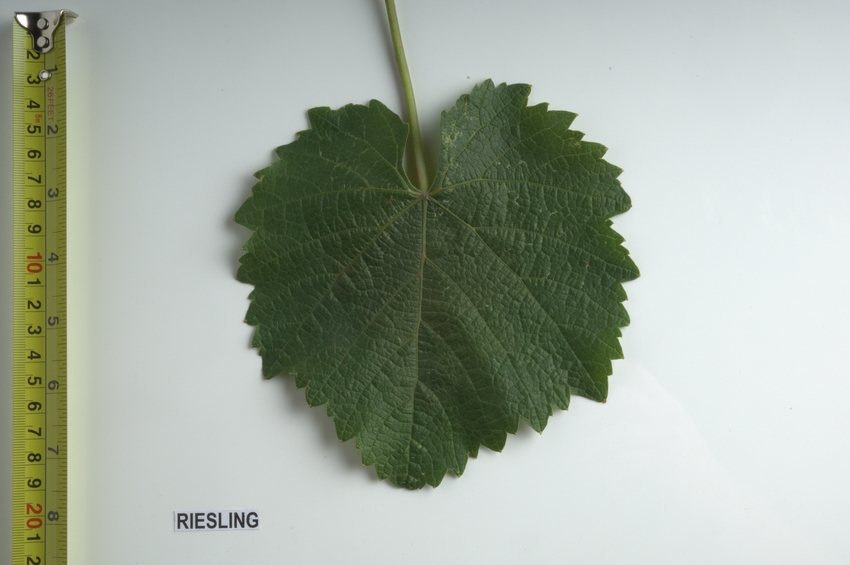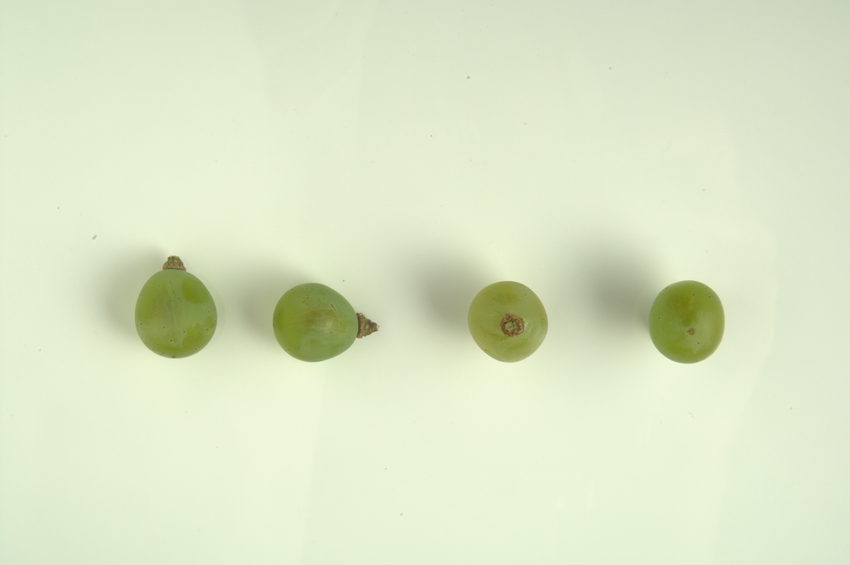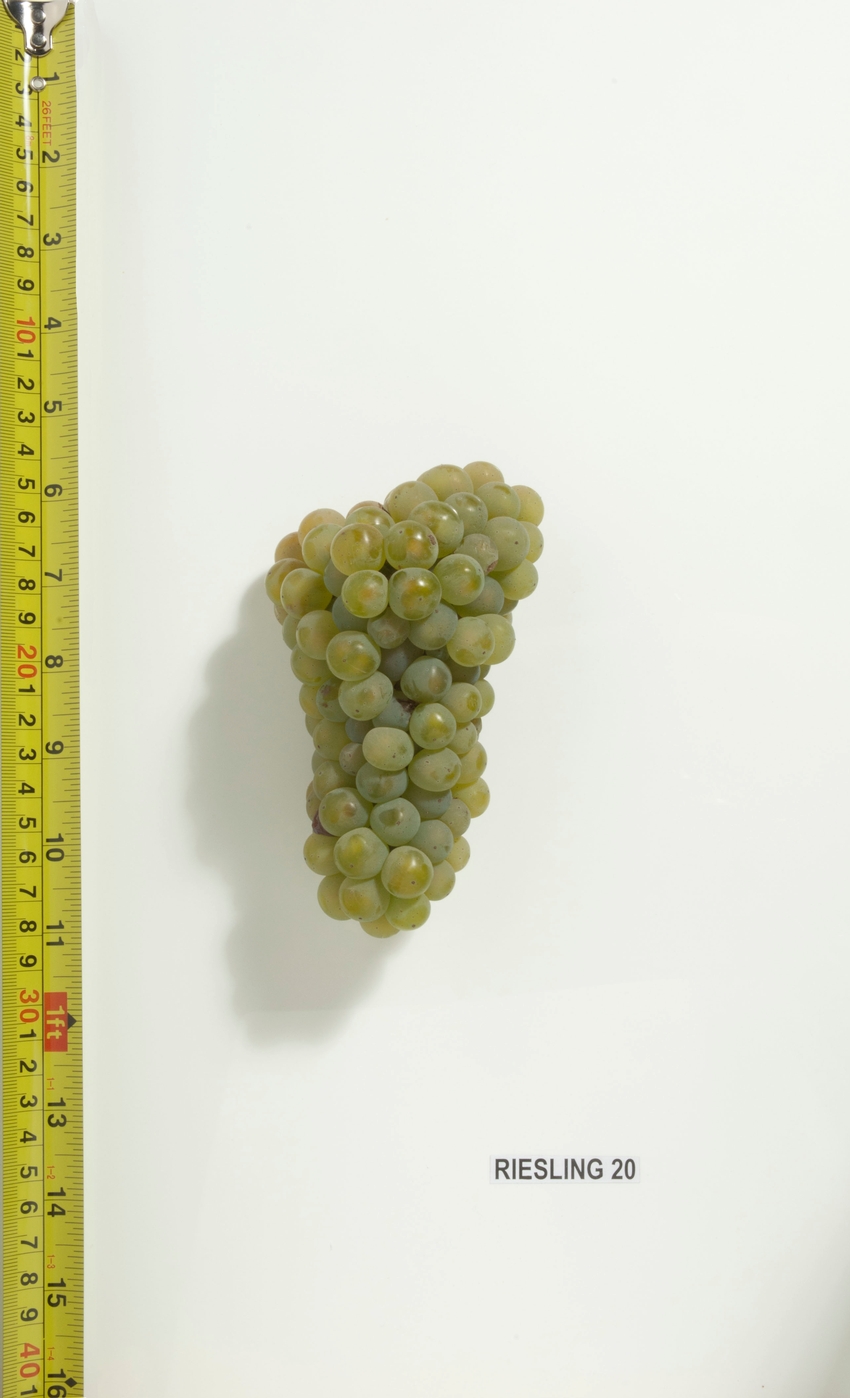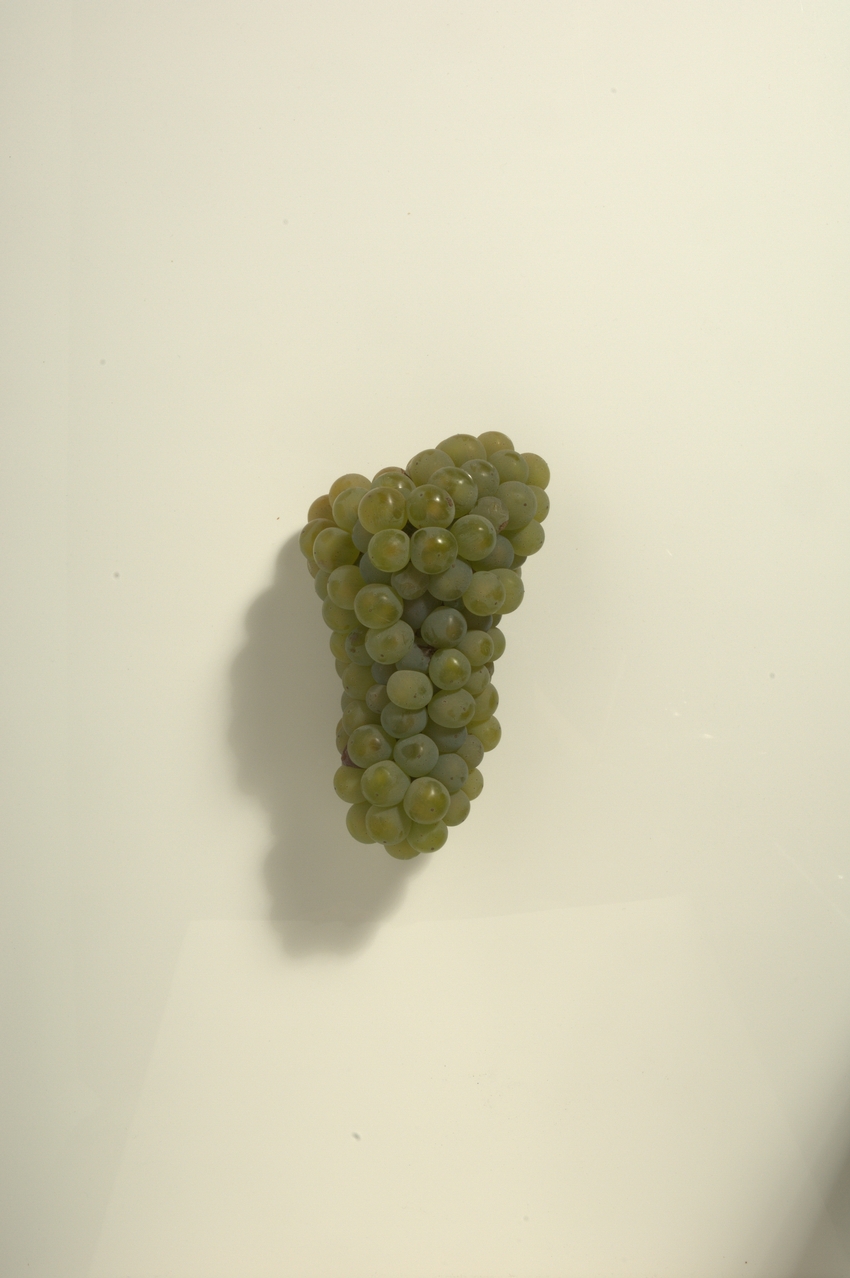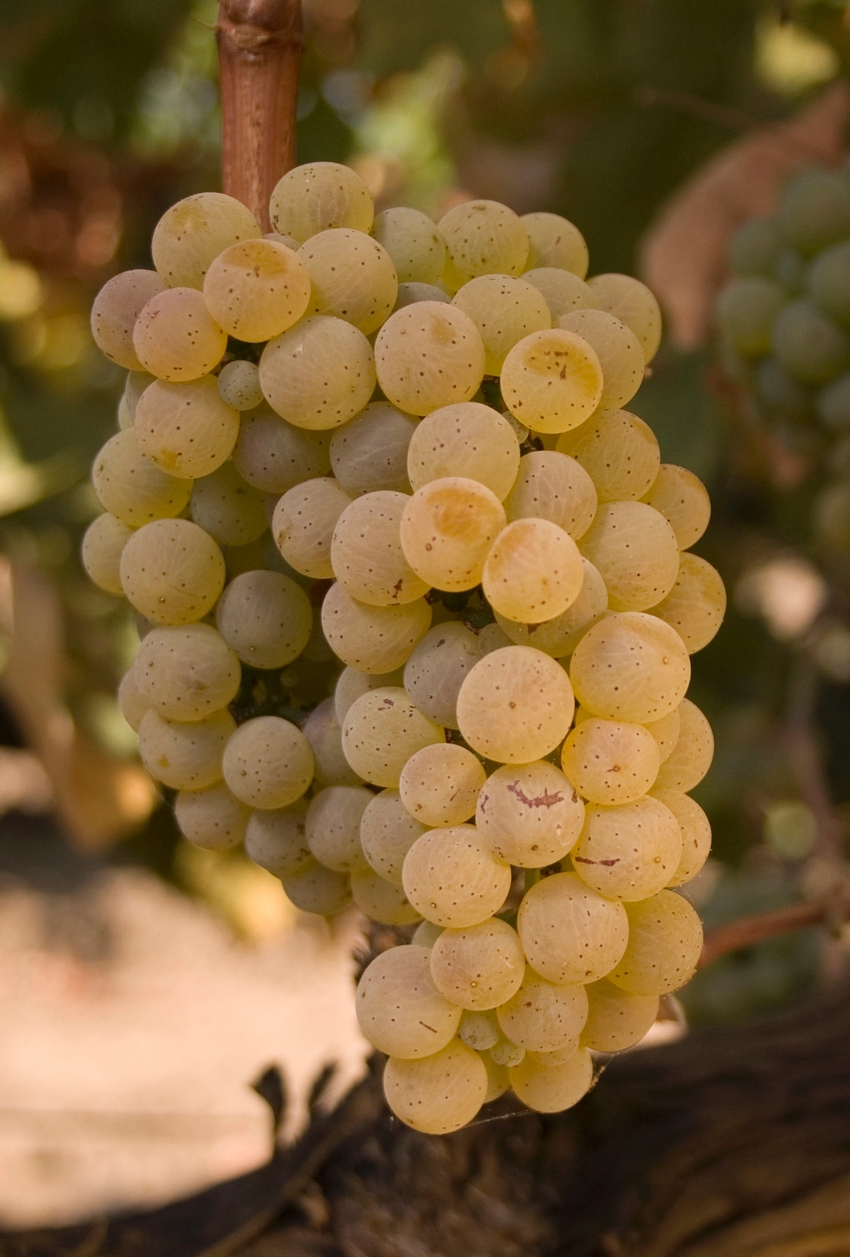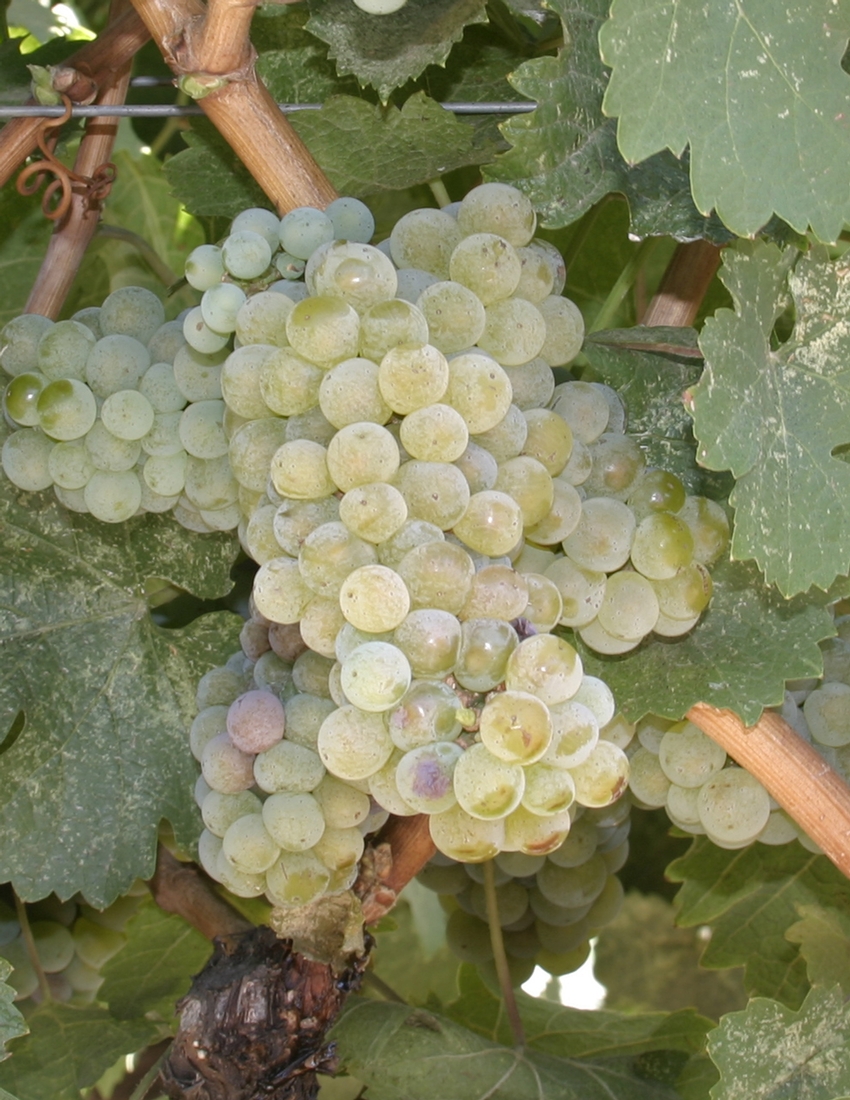
Grape Variety: Riesling
| Variety Name | Riesling |
|---|---|
| TTB Approved Name(s) | Riesling (White Riesling) |
| Common Synonyms | Johannisberg Riesling, White Riesling |
| All Synonyms | Beregi Riesling, Beyaz Riesling, Biela Grasevina, Dinca Grasiva Biela, Edelriesling, Edle Gewurztraube, Fefferl, Feher Rajnai, Gentil Aromatique, Gentile Aromatique, Gewuerzriesling, Gewuerztrabe, Graefenberger, Graschevina, Grasevina Rajnska, Grauer Riesling, Hochheimer, Johannesburg Riesling, Johannisberg Riesling, Johannisberger, Johannisberger Riesling, Karbacher, Karbacher Riesling, Kastellberger, Kis Rizling, Kleigelberger, Kleinriesler, Kleinriesling, Klingelberger, Krauses, Lipka, Moselriesling, Niederlaender, Niederlander, Oberkircher, Oberlaender, Petit Rhin, Petit Riesling, Petracine, Pfaelzer, Piros Rajnai Rizling, Raisin du Rhin, Rajinski Rizling, Rajnai Rizling, Rajnski Ruzling, Rano, Reichsriesling, Reissler, Remo, Rendu, Reno, Rezlin, Rezlink, Rheingauer, Rheinriesling, Rhiesling, Rhine, Rhine Riesling, Riesler, Riesling Bianco, Riesling blanc, Riesling de Rhin, Riesling Echter Weisser, Riesling Edler, Rieslinger, Riesling Gelb Mosel E 43, Riesling Giallo, Riesling Grosso, Riesling Gruener Mosel, Riesling Mosel, Riesling Reinskii, Riesling Renano, Riesling Renano Bianco, Riesling Rhenan, Riesling Weiss, Rislinenok, Risling Reinskii, Rislinok, Rizling Linner, Rizling Rajnai, Rizling Rajinski, Rizling Rajnski, Rizling Rynsky, Roessling, Rohac, Rossling, Rosslinger, Ruessel, Russling, Ryzlink Rynsky, Starosvetske, Starovetski, Szuerke Rizling, Uva Pussila, Weisser Riesling, White Riesling |
| Countries of Origin | Germany |
| Species | V. vinifera |
| Pedigree | Parent-offspring relationship with Gouais blanc |
| References | |
| Berry Color | White |
| Uses | Wine |
| Comments | Riesling is one of the most ancient German white wine grape varieties capable of producing long-lived wines at all sweetness levels. Robinson et al. WINE GRAPES, p. 888 (2012). One of the Riesling selections at FPS is a clone known as Riesling Rot (red Riesling) which has dark pink berries (see Riesling FPS 33.1); that red Riesling clone is a color mutation of white Riesling. |
Riesling PhotosClick photo to enlarge
Riesling Selections
| Riesling 01 | |
| Registration Status | Registered Registered is the ultimate status in the California Department of Food & Agricultures Grapevine Registration & Certification Program. Registered selections have successfully completed all disease testing required by the regulations. Registered selections have also been confirmed as true to variety by experts using visual observations, DNA-based testing or both. |
|---|---|
| Source | Germany via Oregon State University |
| Treatments | None |
| Comments | The Central Office for Clonal Selection is located in the cities of Trier and Bernkastel-Kues, Germany, in the Mosel region. Dr. Günther Stellmach is associated with that office and, in 1987, was responsible for sending what was then called the ‘Riesling 21B’ clone to the grape program at Oregon State University. The selection was in turn sent that year from OSU to Foundation Plant Services as part of the Winegrowers’ Project and is now known at FPS as Riesling 01. German clone 21B was found in the Mosel region in Bernkastel-Kues (the B in the name allegedly refers to Bernkastel). The clone is now known as Weis 21, after the breeder Hermann Weiss. www.urbans-hof.com/mosel-pflanz-service/index.html - in German. When the berries of Weis 21 are smaller, the must density and wine quality increase. Schöffling and Stellmach, 1996. A common comment from growers is that the clone is highly productive. The records are not clear whether FPS received the clone in the form in which it now exists (Weis 21) or in some prior earlier stage in the clonal development process. The Riesling 21B clone was initially given the name Riesling 21B S1 at FPS. Sometime prior to 2000, the name was changed to Riesling 01. The original material for Riesling 01 did not receive any treatment at FPS. It was first planted in the Classic Foundation Vineyard in 1990 and appeared on the list of registered vines in the California Grapevine Registration & Certification Program in 2000. Riesling 01 has qualified for the Russell Ranch Foundation Vineyard (See Riesling 01.1). |
| Riesling 04 | |
| Registration Status | Registered Registered is the ultimate status in the California Department of Food & Agricultures Grapevine Registration & Certification Program. Registered selections have successfully completed all disease testing required by the regulations. Registered selections have also been confirmed as true to variety by experts using visual observations, DNA-based testing or both. |
| Source | White Riesling FPS 04 |
| Treatments | None |
| Comments | Riesling FPS 04 came to FPS before 1963 from an unknown source. The initial entry for the selection in the Goheen indexing binder states ‘No record of source’. Nothing in the historical library documents or other FPS records contradicts that statement. There is no indication in USDA files that the selection was imported from abroad, so it is most likely a local donation. The plant material was originally given the name White Riesling FPS 04 and received no treatment. The selection first appeared on the list of registered vines in 1971. Its name was changed to Riesling FPS 04 in 2003. |
| Riesling 09 | |
| Registration Status | Registered Registered is the ultimate status in the California Department of Food & Agricultures Grapevine Registration & Certification Program. Registered selections have successfully completed all disease testing required by the regulations. Registered selections have also been confirmed as true to variety by experts using visual observations, DNA-based testing or both. |
| Source | The Institut für Reibenzüchtung, Geisenheim, Germany, in 1952 |
| Treatments | Heat treatment 112 days |
| Comments | In 1872, Prussia established a horticulture and viticulture research institute at Geisenheim (Forschungsanstalt Geisenheim – Geisenheim Research Center) in the heart of what is now the Rhinegau region. Robinson, 2006. The Prussian government also initiated grafting improvement measures and clonal selection activities to improve the health status of grapevines. The institute for grapevine breeding and grafting was later established in 1950 as part of the Geisenheim Research Center. Rühl, September 2009.Clonal selection focusing on White Riesling commenced at Geisenheim in 1921. By the end of the 1950’s, seven clones were available to growers, including 110Gm (Geisenheim), 198Gm and 239Gm. Bettiga, 2003; Schmid et al., 1995. German clone 110Gm is represented in the FPS collection by Riesling FPS 09 and Riesling FPS 24. This clone has an extremely fruity, slightly muscat flavor, and in warmer sites it is regarded as not typical of German Riesling wines. Bettiga, 2003. Riesling FPS 09 was imported to Davis from Geisenheim in 1952 with the notation that it was ‘Rhein Riesling klon 110’ (USDA Plant Introduction #200886). The selection was initially named White Riesling FPS 03. It underwent heat treatment for 112 days, and FPMS manager Curtis Alley assigned it the alternate designation of superclone #106 (related to the length of the heat treatment therapy). After the heat treatment, the selection was renumbered White Riesling FPS 09, which was first planted in the foundation vineyard in 1965 and appeared on the list of registered vines in 1967. The name was changed to Riesling FPS 09 in 2003. |
| Riesling 10 | |
| Registration Status | Registered Registered is the ultimate status in the California Department of Food & Agricultures Grapevine Registration & Certification Program. Registered selections have successfully completed all disease testing required by the regulations. Registered selections have also been confirmed as true to variety by experts using visual observations, DNA-based testing or both. |
| Source | Martini Monte Rosso vineyard, Sonoma, California |
| Treatments | Heat treatment 105 days |
| Comments | Dr. Harold Olmo of UC Davis' Department of Viticulture & Enology began clonal selection work on Riesling around 1950. Riesling FPS 10 and Riesling FPS 28 represent fruits of that effort. The two selections originated from the Martini family’s Monte Rosso vineyard in Sonoma County. The Mt. Pisgah vineyard was originally planted in 1885 on a mountainside in the Mayacamas Range overlooking the Valley of the Moon. Riesling was one of the cultivars planted in the 300-acre vineyard. Phylloxera destroyed the original vines at what became known as Goldstein Ranch. The vineyard was restored and fully producing again by the turn of the 20th century. Peninou, 1998. The vineyard survived Prohibition because the owner at the time sold his grapes commercially and did not make wine. Pitcher, 2007. Louis Martini purchased the well-respected Mt. Pisgah vineyard in 1936 and renamed it ‘Monte Rosso’ (red mountain). In an oral history interview with UC in 1973, Mr. Martini mentioned that there were quite a few good varieties in the vineyard (including Sémillon, Sylvaner and Folle blanche) when he purchased it, but he did not specifically mention Riesling. Other sources report that Riesling was one of the cultivars on the property. Pitcher, 2007. Martini himself began planting grapes in the Monte Rosso vineyard in 1939, including what he referred to as Johannisberg Riesling. Martini, L.M , 1973; Sullivan, 1994, 2008. In 1951, Dr. Olmo selected Riesling wood from the Monte Rosso vineyard for clonal evaluation trials. That wood was described as ‘clones 1-25’ from the Monte Rosso vineyard. Olmo, undated. In the Olmo files located in Special Collections at Shields Library, UC Davis, a paper in Olmo’s handwriting dated August 1951 states: ‘Bud selection. L.M. Martini, Monte Rosso. 1-25 White Riesling. Hilltop. Best vines only. Many vines of shot berry type, some flower clusters drying completely and sterile. Some not shedding calyptras’. Louis Martini had also purchased approximately 200 acres of the Stanly Ranch in the Carneros section of Napa in 1942. Martini, L.P., 1973. Olmo conducted ‘progeny’ (clonal) tests on this property for several varieties, most notably Chardonnay. A handwritten map of the Stanly Lane vineyard property was discovered in the Olmo files in Special Collections. The map indicates that Olmo also conducted progeny tests on the White Riesling Monte Rosso clones 1-25 at the Stanly Lane site. It is clear that Riesling FPS 28 originated from Martini’s Monte Rosso vineyard. The precise origin of FPS 10 was not as well-documented in the FPS records. The FPS database and old [Austin] Goheen indexing records state definitely that the source vine for Riesling FPS 28 came to FPS around 1965 from the Martini Stanly Lane vineyard (location r10 v8), the location of the Monte Rosso clonal trials. In fact, a handwritten document in FPS files (‘Foundation candidates’) dated March 9, 1965, indicates that two clones were brought to FPS from the ‘Martini vineyard, Napa’ – one from location r10 v8 (clone 8) and one possibly from r23 v3 (clone 25). Olmo, 1965. The March 1965 paper is significant because it identifies a second Monte Rosso clone coming to FPS at that time. FPS source information for Riesling FPS 10 shows that it originated from ‘a’ Martini vineyard around 1965, but does not tie the selection to the Monte Rosso clonal tests. The documents from old Olmo and FPS files show that Riesling FPS 10 was undoubtedly the second Monte Rosso clone that was brought to FPS from the Stanly Lane property in Napa at the same time as Monte Rosso ‘clone 8’ (FPS 28). UCD documents related to clonal trials conducted on the two selections in 1975-1981 state clearly that the source vines for Riesling FPS 10 and 28 were not the same vine at Stanly Lane. Alley, 1975. Riesling FPS 10 came to FPS around 1965 and was given the name White Riesling FPS 10. Curtis Alley, a UC Davis viticulture specialist and former manager of FPMS, also referred to Riesling FPS 10 as superclone #107. Source information was entered in the White Riesling section of the Goheen indexing binder as ‘No number’, most likely because the exact source location from Stanly Lane was at issue. The two Martini Riesling clones were entered together sequentially in the indexing binder and both underwent preliminary index testing at FPS in 1964-65. After preliminary index testing, Riesling FPS 10 underwent heat treatment for 105 days and was first planted in the foundation vineyard in 1967. The selection first appeared on the list of registered vines in the California Grapevine Registration & Certification Program (R & C Program) in 1970. The name was changed to Riesling FPS 10 in 2003. |
| Riesling 12 | |
| Registration Status | Registered Registered is the ultimate status in the California Department of Food & Agricultures Grapevine Registration & Certification Program. Registered selections have successfully completed all disease testing required by the regulations. Registered selections have also been confirmed as true to variety by experts using visual observations, DNA-based testing or both. |
| Source | Neustadt clone 90 from Germany |
| Treatments | None , Tissue Culture Excision |
| Comments | Neustadt in the Pfalz region of Germany is an important center for viticultural and wine research. Clonal development work is done at the Neustadt Research Institute, which is now known as Dienstleistungszentrum Ländlicher Raum Rheinfalz (known in 1963 as Landes Lehr und Forschungsanstalt at Neustadt). Two German clones from the Pfalz region are included in the FPS public collection: Riesling 12 and Riesling 21. Both were sent to Davis in May, 1963, from the Neustadt Research Institute. German clone 90 (also known as N90, for ‘Neustadt 90’) was the only one of the two Riesling clones that was actually developed at Neustadt. Clone 90 was first recognized as a superior clone by German researchers in 1913. Reportedly, years of experimentation proved the clone to be aromatic, cold tolerant and disease resistant. Alley, 2008. The 1963 importation paperwork for this selection named the plant material sent to FPS from Neustadt as 'Riesling Klon 90' (USDA Plant Identification #289905). The selection was initially assigned the name White Riesling 12 at FPS. It received no treatment and was planted in the foundation vineyard at FPS in 1969. White Riesling 12 first appeared on the list of registered vines in the California Grapevine Registration & Certification Program in 1970. The name of this selection was changed to Riesling 12 in 2003. Riesling 12 has qualified for the Russell Ranch Foundation Vineyard (see Riesling 12.1). |
| Riesling 16.1 | |
| Registration Status | Registered Registered is the ultimate status in the California Department of Food & Agricultures Grapevine Registration & Certification Program. Registered selections have successfully completed all disease testing required by the regulations. Registered selections have also been confirmed as true to variety by experts using visual observations, DNA-based testing or both. |
| Source | Australia |
| Treatments | Microshoot tip tissue culture therapy |
| Comments | In 1970, USDA-ARS/UC Davis Plant Pathologist Dr. Austin Goheen imported a White Riesling clone from Victoria, Australia. The plant material was sent by R.H. Taylor at the Victorian Plant Research Institute in Burnley, Victoria, and was labeled White Riesling 'Tulloch S.A. 140'. (USDA Plant Identification #364292). The original material was first planted in the FPS foundation vineyard in 1973 without receiving any treatment. When nearby vines tested positive for virus, the registered Riesling 16 vines were put on hold status in 2003. The foundation vines for Riesling 16 later tested positive for GVA. Riesling 16 underwent microshoot tip tissue culture therapy at FPS in 2009. The treated material successfully completed testing in 2013 to qualify for the Russell Ranch Foundation Vineyard where it will be Riesling 16.1. |
| Riesling 19 | |
| Registration Status | Registered Registered is the ultimate status in the California Department of Food & Agricultures Grapevine Registration & Certification Program. Registered selections have successfully completed all disease testing required by the regulations. Registered selections have also been confirmed as true to variety by experts using visual observations, DNA-based testing or both. |
| Protocol 2010 | Qualifies for Protocol 2010. |
| Source | Istituto Sperimentale per la Viticoltura, Conegliano, Italy |
| Treatments | Microshoot tip tissue culture therapy |
| Comments | The plant material that eventually became Riesling 19 was imported directly to Foundation Plant Services from Italy in 1988 as a follow up to the Oregon Winegrowers’ Project. The selection came to FPS from Dr. Antonio Calò of the Instituto Sperimentale per la Viticoltura (ISV) in Conegliano, Italy, and was labeled Riesling Italico clone ISV-CPF 100. Winegrowers Report, 1988. Apparently ‘CPF’ stands for ‘Centro Potenziamento Friuli’ (Improvement Center for Friuli), but there is no Riesling clone (either Renano or Italico) in Italy with the number 100. Once at FPS, the selection was originally assigned the name Riesling Italico S1. A new selection was created from selection S1 using microshoot tip tissue culture therapy in 1997, resulting in Riesling Italico 03. After successful completion of testing for the California Grapevine Registration & Certification Program, Riesling Italico 03 was planted in the Classic Foundation Vineyard in 2001. Subsequent ampellographic and DNA analysis (2003) at FPS revealed that the selection 03 plant material was not Riesling Italico but was, in fact, the unrelated variety Riesling weiss (Riesling). The name was changed to Riesling 19 in 2005 to reflect its correct cultivar identification. Riesling 19 first appeared on the list of registered vines for the R&C Program in 2005. |
| Riesling 20 | |
| Registration Status | Registered Registered is the ultimate status in the California Department of Food & Agricultures Grapevine Registration & Certification Program. Registered selections have successfully completed all disease testing required by the regulations. Registered selections have also been confirmed as true to variety by experts using visual observations, DNA-based testing or both. |
| Protocol 2010 | Qualifies for Protocol 2010. |
| Source | Alsace, France via California vineyard in 1999 |
| Treatments | Microshoot tip tissue culture therapy |
| Comments | The plant material that became Riesling 20 was donated to the Foundation Plant Services public collection in 1999 by Clos Pepe Vineyards in Lompoc, California. This selection is a Riesling clone reportedly from Alsace, France, most likely Alsatian clone 813. The original material tested positive for leafroll virus and underwent microshoot tip tissue culture therapy in 2001. After successful completion of testing for the California Grapevine Registration & Certification Program, Riesling 20 qualified for the Classic Foundation Vineyard in 2005. |
| Riesling 21 | |
| Registration Status | Registered Registered is the ultimate status in the California Department of Food & Agricultures Grapevine Registration & Certification Program. Registered selections have successfully completed all disease testing required by the regulations. Registered selections have also been confirmed as true to variety by experts using visual observations, DNA-based testing or both. |
| Source | Neustadt, Germany |
| Treatments | Microshoot tip tissue culture therapy |
| Comments | Neustadt in the Pfalz region of Germany is an important center for viticultural and wine research. Clonal development work is done at the Neustadt Research Institute, which is now known as Dienstleistungszentrum Ländlicher Raum Rheinfalz (known in 1963 as Landes Lehr und Forschungsanstalt at Neustadt). Two German clones from the Pfalz region are included in the FPS public collection: Riesling FPS 12 and Riesling FPS 21. Both were sent to Davis in May, 1963, from the Neustadt Research Institute. The source of Riesling FPS 21 was described as ‘clone 356’ when it arrived at FPS. Originally this Riesling clone was called Trautwein 356 in Germany, indicating selection by a man named Trautwein. When he died, a man named Finkenauer continued selecting the A clones. Finkenauer maintained the number 356 but changed the clonal designation to 356Fin. According to Matthias Zink, manager of the vine nursery at Neustadt, clone ‘356 Fin’ was previously held at the Institute at Bad Kreuznach; it is now held at the Institute in Oppenheim (Dienstleistungszentrum Ländlicher Raum Rheinpfalz Rheinhessen-Nahe-Hunsrück). FPS Program Manager at the time, Curtis Alley reported that the clone sent to Foundation Plant Services was the clone 356 held at Bad Kreuznach. Alley, 1977. Upon its arrival in Davis, clone 356 was given the name White Riesling 14 and was planted in the old FPS foundation vineyard in 1970. The selection does not appear on any of the lists of registered selections in the 1970’s and 1980’s, even though all of the original virus tests were negative. In 1981, White Riesling 14 tested positive for Rupestris stem pitting virus, which would have disqualified it for the California Registration & Certification Program at that time. The name of the selection was changed to Riesling 14 in 2003. In 2006, Riesling 21 was created from Riesling 14 by use of microshoot tip tissue culture therapy. After successful completion of testing for the California Grapevine Registration & Certification Program, Riesling 21 was planted in the Classic Foundation Vineyard in 2006. |
| Riesling 22 | |
| Registration Status | Registered Registered is the ultimate status in the California Department of Food & Agricultures Grapevine Registration & Certification Program. Registered selections have successfully completed all disease testing required by the regulations. Registered selections have also been confirmed as true to variety by experts using visual observations, DNA-based testing or both. |
| Source | Mendoza, Argentina |
| Treatments | Microshoot tip tissue culture therapy |
| Comments | This selection originally came to Davis from Fernandez-Montero, Mendoza, Argentina, in 1961 (USDA-ARS Plant Identification number 277335-1-1). At first, the selection was named White Riesling 13. The name was changed to Riesling 13 in 2005. Riesling 13 underwent microshoot tip tissue culture therapy in 1999. After successful completion of testing for the California Grapevine Registration & Certification Program, the newly treated material was planted in the Classic Foundation Vineyard in 2006 as Riesling 22. |
| Riesling 23 | |
| Registration Status | Registered Registered is the ultimate status in the California Department of Food & Agricultures Grapevine Registration & Certification Program. Registered selections have successfully completed all disease testing required by the regulations. Registered selections have also been confirmed as true to variety by experts using visual observations, DNA-based testing or both. |
| Source | Geisenheim, Germany via Oregon State University |
| Treatments | None; RSP+ , Tissue Culture Excision |
| Comments | Riesling 23 is Geisenheim Germany clone 239-25Gm (Gm indicating a Geisenheim clone). This versatile clone with its sub-clones is the most widely distributed selection in Germany and produces fruity wines with a wide range of terpenes, resulting in a spectrum of fruitfulness. Bettiga, 2003; Schmid et al., 1995. In the mid-1980’s the Oregon Winegrowers’ Association and Oregon State University (OSU) collaborated on a project related to a mutual interest in European clonal material. They imported many European clones to Oregon. In response to interest from the California grape and wine industry, OSU agreed in 1987-88 to make some of clones available for the public collection at FPS. Riesling 23 was imported from Geisenheim by OSU and then sent to Foundation Plant Services in 1987. OSU received the original material labeled ‘Riesling 239-25Gm’. When the selection first arrived at FPS, it was designated Riesling S1. Tests at FPS in the late 1980’s detected Rupestris stem pitting virus, so the selection was distributed in the 1990’s as non-registered, RSP+ Riesling 02. [This selection should not be confused with White Riesling 02, which was the precursor to Riesling FPS 17, above]. This selection was eventually renamed from Riesling 02 to Riesling 23. Riesling 23 was created by vegetative propagation techniques when a cutting was taken from the original source plant and advanced to Riesling 23 in 2007. There is no indication in either the FPS database or the FPS tissue culture records that Riesling 23 ever underwent microshoot tip tissue culture therapy, although an article in the 2007 FPS Grape Program Newsletter so indicated. It appears that the article was in error. The new selection number was most likely a product of moving the selection from the Department of Viticulture & Enology vineyard location into the FPS Classic Foundation Vineyard. |
| Riesling 24 | |
| Registration Status | Registered Registered is the ultimate status in the California Department of Food & Agricultures Grapevine Registration & Certification Program. Registered selections have successfully completed all disease testing required by the regulations. Registered selections have also been confirmed as true to variety by experts using visual observations, DNA-based testing or both. |
| Protocol 2010 | Qualifies for Protocol 2010. |
| Source | Clone 110Gm, Geisenheim, Germany |
| Treatments | Microshoot tip tissue culture therapy |
| Comments | In 1872, Prussia established a Horticulture and Viticulture Research Institute at Geisenheim (Forschungsanstalt Geisenheim – Geisenheim Research Center) in the heart of what is now the Rhinegau region. Robinson, 2006. The Prussian government also initiated grafting improvement measures and clonal selection activities to improve the health status of grapevines. The Institute for Grapevine Breeding and Grafting was later established in 1950 as part of the Geisenheim Research Center. Rühl, September 2009. Clonal selection focusing on White Riesling commenced at Geisenheim in 1921. By the end of the 1950’s, seven clones were available to growers, including 110Gm (Geisenheim), 198Gm and 239Gm. Bettiga, 2003; Schmid et al., 1995. The original clones were tested further and subclones were created and tested. German clone 110Gm is represented in the Foundation Plant Services collection by Riesling 09 and Riesling 24. This clone has an extremely fruity, slightly muscat flavor, and in warmer sites it is regarded as not typical of German Riesling wines. Bettiga, 2003. Riesling 24 was imported to Davis from Geisenheim in 1952 as ‘Rhein Riesling klon 110’. It has the same source reference as Riesling 09 and was originally distributed by FPS as White Riesling 03. The original material for this selection tested positive for Rupestris stem pitting virus. The selection was dropped from the California Registration & Certification Program in the early 1980’s because, at that time, vines tseting positive for Rupestris stem pitting virus were not allowed in the Program. The plant material was maintained at FPS and the name was changed in 2003 to Riesling 03. In 2007, microshoot tip tissue culture therapy was used to create an RSP-free selection of 110Gm, which in 2008 was given the name Riesling 24 after successful completion of testing. Riesling 24 was planted in the FPS Classic Foundation Vineyard in 2008. |
| Riesling 28 | |
| Registration Status | Registered Registered is the ultimate status in the California Department of Food & Agricultures Grapevine Registration & Certification Program. Registered selections have successfully completed all disease testing required by the regulations. Registered selections have also been confirmed as true to variety by experts using visual observations, DNA-based testing or both. |
| Source | Martini Monte Rosso vineyard, Sonoma County, California |
| Treatments | Heat treatment 154 days; microshoot tip tissue culture therapy |
| Comments | Dr. Harold Olmo (Department of Viticulture & Enology, University of California, Davis) began clonal selection work on the Riesling cultivar around 1950. Riesling 10 and Riesling 28 represent fruits of that effort. The two selections originated from the Martini family’s Monte Rosso vineyard in Sonoma County, California. The Mt. Pisgah vineyard was originally planted in 1885 on a mountainside in the Mayacamas Range overlooking the Valley of the Moon. Riesling was one of the cultivars planted in the 300-acre vineyard. Phylloxera destroyed the original vines at what became known as Goldstein Ranch. The vineyard was restored and fully producing again by the turn of the 20th century. Peninou, 1998. The vineyard survived Prohibition because the owner at the time sold his grapes commercially and did not make wine. Pitcher, 2007. Louis Martini purchased the well-respected Mt. Pisgah vineyard in 1936 and renamed it ‘Monte Rosso’ (red mountain). In an oral history interview with University of California staff in 1973, Mr. Martini mentioned that there were quite a few good varieties in the vineyard (including Sémillon, Sylvaner and Folle blanche) when he purchased it, but he did not specifically mention Riesling. Other sources report that Riesling was one of the cultivars on the property. Pitcher, 2007. Martini himself began planting grapes in the Monte Rosso vineyard in 1939, including what he referred to as Johannisberg Riesling. Martini, L.M , 1973; Sullivan, 1994, 2008. In 1951, Dr. Olmo selected Riesling wood from the Monte Rosso vineyard for clonal evaluation trials. That wood was described as ‘clones 1-25’ from the Monte Rosso vineyard. Olmo, undated. In the Olmo files located in Special Collections at Shields Library, University of California, Davis, a paper in Olmo’s handwriting dated August 1951 states: ‘Bud selection. L.M. Martini, Monte Rosso. 1-25 White Riesling. Hilltop. Best vines only. Many vines of shot berry type, some flower clusters drying completely and sterile. Some not shedding calyptras’. Louis Martini had also purchased approximately 200 acres of the Stanly Ranch in the Carneros section of Napa in 1942. Martini, L.P., 1973. Olmo conducted ‘progeny’ (clonal) tests on this property for several varieties, most notably Chardonnay. A handwritten map of the Stanly Lane vineyard property was discovered in the Olmo files in Special Collections. The map indicates that Olmo also conducted progeny tests on the White Riesling Monte Rosso clones 1-25 at the Stanly Lane site. It is clear that Riesling 28 originated from Martini’s Monte Rosso vineyard. The precise origin of Riesling 10 was not as well-documented in the FPS records. The FPS database and old [Dr. Austin] Goheen indexing records state definitely that the source vine for Riesling 28 came to FPS around 1965 from the Martini Stanly Lane vineyard (location r10 v8), the location of the Monte Rosso clonal trials. Upon its arrival at FPS from the Martini Stanly Lane vineyard around 1965, this selection was assigned the name White Riesling 15. After preliminary index testing, the selection underwent heat treatment for 154 days and was planted in the old FPS foundation vineyard in May of 1972. Although this selection never tested positive for virus, White Riesling 15 underwent microshoot tip tissue culture therapy in 1999. The reason for the therapy is unclear, except that this selection was removed from the list of registered vines after virus was discovered in the foundation vineyard in 1992-1993. In 2008, the tissue culture version of this selection was released after successful completion of testing as Riesling 28. It was planted in the Classic Foundation Vineyard in that year. |
| Riesling 29 | |
| Registration Status | Registered Registered is the ultimate status in the California Department of Food & Agricultures Grapevine Registration & Certification Program. Registered selections have successfully completed all disease testing required by the regulations. Registered selections have also been confirmed as true to variety by experts using visual observations, DNA-based testing or both. |
| Source | France |
| Treatments | None, RSP+ |
| Comments | This selection came to Foundation Plant Services in 1987 from Colmar, France, via Oregon State University, as part of the Winegrowers' Project, which aimed to acquire unique European clones for United States growers. The plant material is reported to be French clone 813 (the French clone number was changed to Riesling 49 in 1971 when the clone was certified). This is considered a generic clone because only the official French trademark program (ENTAV-INRA) may authorize French clones. The material was known at FPS as White Riesling S1 while undergoing disease testing and successfully qualified for the FPS Classic Foundation Vineyard in 2010. At that time, the name of the selection was changed to Riesling FPS 29. |
| Riesling 31 (proprietary) | |
| Registration Status | Provisional Provisional Status is an important term used in the regulations of the California Department of Food & Agriculture's Grapevine Registration & Certification Program. Grapevine selections with Provisional Status have successfully completed all required disease testing, but have not been confirmed as true to variety. Propagation material from Provisional selections qualifies for release subject to the understanding on the part of the customer that the identity has yet to be confirmed. |
| Source | Geisenheim University, Germany |
| Treatments | None , Tissue Culture Excision |
| Proprietary | Proprietary- cannot be distributed without written permission from owner: Geisenheim University |
| Patented / Proprietary | Proprietary |
| Comments | This proprietary selection came to Foundation Plant Services in 2014 from Geisenheim University, Germany. The material is clone 64-177-3 Gm. The original material completed testing and qualified for the California Grapevine Registration & Certification Program in 2016. |
| Riesling 32 (proprietary) | |
| Registration Status | Provisional Provisional Status is an important term used in the regulations of the California Department of Food & Agriculture's Grapevine Registration & Certification Program. Grapevine selections with Provisional Status have successfully completed all required disease testing, but have not been confirmed as true to variety. Propagation material from Provisional selections qualifies for release subject to the understanding on the part of the customer that the identity has yet to be confirmed. |
| Source | Geisenheim University, Germany |
| Treatments | None , Tissue Culture Excision |
| Proprietary | Proprietary- cannot be distributed without written permission from owner: Geisenheim University |
| Patented / Proprietary | Proprietary |
| Comments | This proprietary selection came to Foundation Plant Services in 2014 from Geisenheim University, Germany. The material is clone Steinberg 7-5-9 Gm. The original material completed testing and qualified for the California Grapevine Registration & Certification Program in 2016. |
| Riesling 33 (proprietary) | |
| Registration Status | Provisional Provisional Status is an important term used in the regulations of the California Department of Food & Agriculture's Grapevine Registration & Certification Program. Grapevine selections with Provisional Status have successfully completed all required disease testing, but have not been confirmed as true to variety. Propagation material from Provisional selections qualifies for release subject to the understanding on the part of the customer that the identity has yet to be confirmed. |
| Source | Geisenheim University, Germany |
| Treatments | None , Tissue Culture Excision |
| Proprietary | Proprietary- cannot be distributed without written permission from owner: Geisenheim University |
| Patented / Proprietary | Proprietary |
| Comments | This proprietary clone came to Foundation Plant Services in 2015 from Geisenheim University, Germany. The material is a red Riesling clone (Roter Riesling or Riesling Rot), which is a color mutation of white Riesling with dark pink berries. The berries have thicker skins with phenolics different from white Riesling. The variety may have botrytis resistance. The plant material at FPS is Geisenheim clone 26. The original material successfully completed testing to qualify for the FPS Classic Foundation Vineyard in 2017 as Riesling 33. The original material also underwent microshoot tip tissue culture therapy at FPS and qualified for the Russell Ranch Foundation Vineyard in 2017 as Riesling 33.1. |
| Riesling 34 | |
| Source | ISV clone 10, Istituto Sperimentale per la Viticoltura, Italy |
| Treatments | undergoing testing , Tissue Culture Excision |
| Comments | This selection came to Foundation Plant Services in 1988 as part of the Winegrowers' Project. The plant material was supplied by Dr. Antonio Calò of the Istituto Sperimentale per la Viticoltura in Conegliano. The material is reportedly ISV clone 10. The selection is currently in the pipeline at FPS and is undergoing testing. |
| Riesling 34.1 | |
| Registration Status | Provisional Provisional Status is an important term used in the regulations of the California Department of Food & Agriculture's Grapevine Registration & Certification Program. Grapevine selections with Provisional Status have successfully completed all required disease testing, but have not been confirmed as true to variety. Propagation material from Provisional selections qualifies for release subject to the understanding on the part of the customer that the identity has yet to be confirmed. |
| Protocol 2010 | Qualifies for Protocol 2010. |
| Treatments | Tissue Culture Excision |
| Riesling 49 (proprietary) | |
| Registration Status | Registered Registered is the ultimate status in the California Department of Food & Agricultures Grapevine Registration & Certification Program. Registered selections have successfully completed all disease testing required by the regulations. Registered selections have also been confirmed as true to variety by experts using visual observations, DNA-based testing or both. |
| Source | Authorized French clone Riesling 49, France |
| Treatments | None |
| Proprietary | Proprietary- cannot be distributed without written permission from owner: ENTAV-ITV |
| Patented / Proprietary | Proprietary |
| Comments | The Etablissement National Technique pour l’Amelioration de la Viticulture (ENTAV) is an official agency certified by the French Ministry of Agriculture and responsible for the management and coordination of the French national clonal selection program. ENTAV authorizes official French clonal material under a trademark. The official French Riesling clone, clone 49, was once known as Alsatian (White Riesling) clone 813 from Colmar, Alsace. Alsatian clone 813 has since been re-designated official French clone ENTAV-INRA® 49. Riesling ENTAV-INRA® 49 came to Foundation Plant Services in 2000. After successful completion of testing for the California Grapevine Registration & Certification Program, the selection was planted in the Classic Foundation Vineyard in 2003. The ENTAV-INRA literature on the clone indicates that, when yields are controlled, the wines are very well balanced and very typical. Riesling ENTAV-INRA®49 is a proprietary selection at FPS and is distributed through ENTAV-INRA licensees. [This information was excerpted from an article on the Rieslings of FPS from the October 2009 FPS Grape Program Newsletter, accessible at http://fps.ucdavis.edu in the Publications area] |




